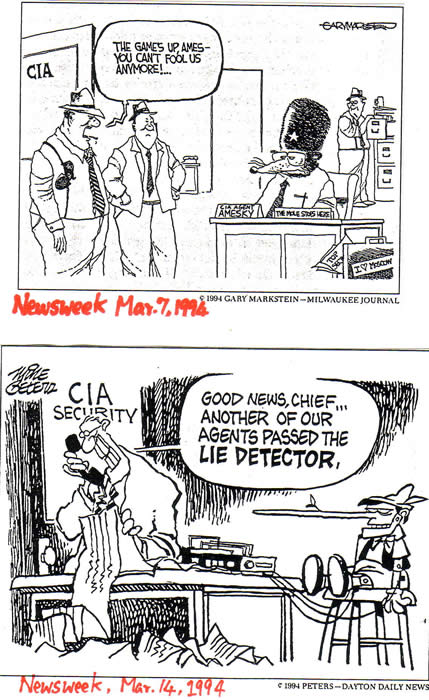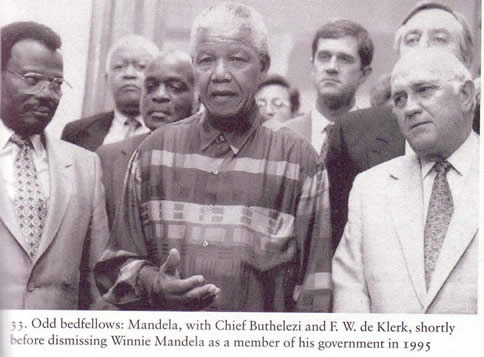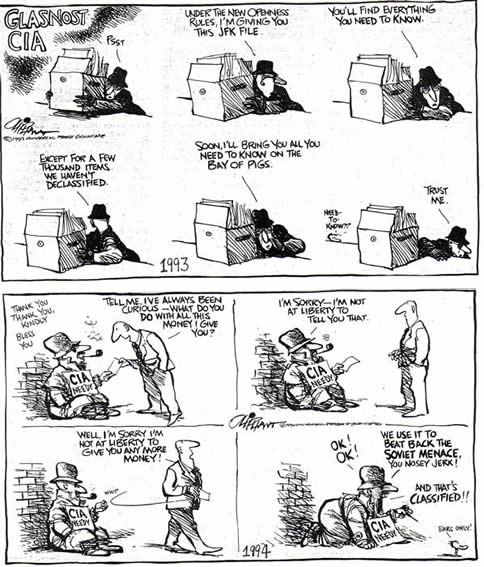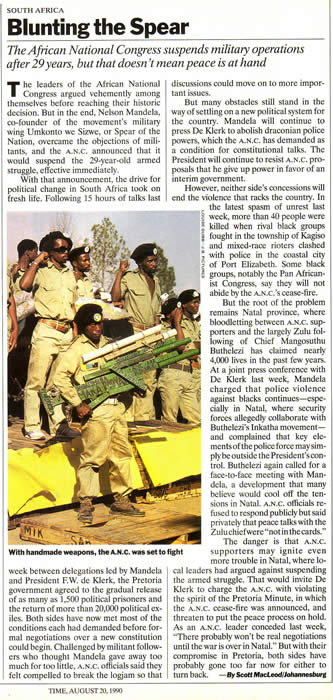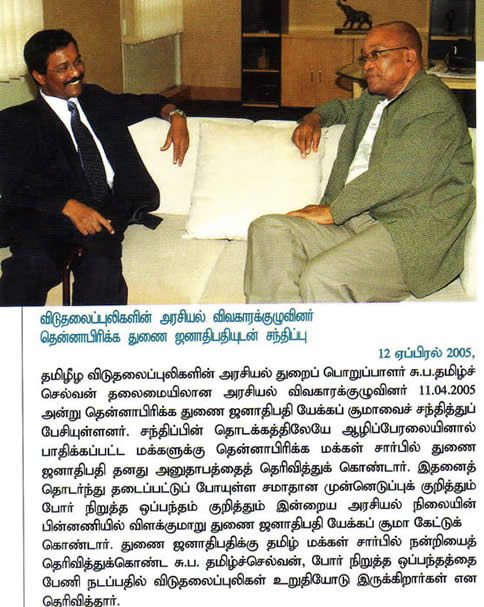Ilankai Tamil Sangam30th Year on the Web Association of Tamils of Sri Lanka in the USA |
|||
 Home Home Archives Archives |
Prabhakaran’s Tigers and Mandela’s SpearsPart 3by Sachi Sri Kantha, February 7, 2012
Comparison of the Tamil Tigers and Mandela’s Spears After a brief break, I continue my commentary on the theory of ‘dark network resilience’ proposed by Rene Bakker, Jorg Raab and Brinton Milward [Journal of Policy Analysis and Management, 2011: DOI 10.1002/pam.20619]. In the previous Part 2, I pointed out some lapses in the analysis of Bakker et al. These include the following: (1) omission of CIA’s activities as a valid control; (2) unusual time frame, between the MK (which became ‘unbanned’ in 1990 after Mandela’s release from prison) and the LTTE (which continued its activities – Eelam War 2, Eelam War 3 and Eelam War 4 until 2009) in comparison. (3) Omission of the LTTE’s war against the Indian army (1987-1990). (4) The emergence of GPS as an offensive weapon after the Persian Gulf War in 1991, which blunted the LTTE’s offense.
Bakker and his colleagues do mention the following: “We found that the LTTE has been elaborately studied by international scholars, and many secondary sources are available. In addition, the recent destruction of the LTTE received considerable coverage in the international press.” If Tamil-challenged Rohan Gunaratna [head of the International Centre for Political Violence and Terrorism Research (ICPVTR) in Singapore] is acknowledged as a “valuable source” on the LTTE, then it is pertinent to note that Bakker et al. had co-opted bias into their analysis. The phrase ‘many secondary sources’ also should not be ignored. How about primary sources? Despite these shortcomings, I provide what Bakker et al. had presented on the ‘image’ of the LTTE, in terms of ‘resources’, ‘legitimacy’, ‘networked capability’,‘centralization’ and ‘motivation’. I provide the relevant material presented by Bakker et al, and my critique. LTTE’s ‘resources’ “One of the greatest resources of the LTTE was its control of a large territory on the island of Sri Lanka. From this territory they could raise funds, recruit and train people, as well as plan attacks on the Sri Lankan government. In a safe territory it is also much easier to maintain an integrated structure supportive of a common purpose. In territory controlled by the enemy, the converse is necessary to avoid detection and destruction. After the battle of Elephant Pass, the LTTE lost control of most of its territory, which was its most valuable resource. This led to a downward spiral from which the LTTE could not recover. In addition, the LTTE was able to raise considerable funds from the Tamil diaspora in Western countries, both through regular fund-raising activities and through intimidation and extortion.” What is revealing in this passage, is the utter lack of numbers, to substantiate and verify the convoluted view of the authors! “Considerable funds from Tamil diaspora in Western countries” – how much is considerable? Is it, $10,000 or $100,000 or $1,000,000? Assuming that LTTE intimidated and extorted the Tamil diaspora annually, how much it was able to collect in this fashion to fill its coffers? This intimidation and extortion is probably based on the fictional imagination of the likes of Dr. Rohan Gunaratna that majority of the Tamil diaspora are bankers and loan sharks who can naively cough up at the LTTE’s demand.
LTTE’s ‘legitimacy’ Bakker et al. identify legitimacy as ‘a generalized perception that the actions, activities and structure of the network are desirable and appropriate’. Then, they split ‘legitimacy’ into ‘internal and external legitimacy’. They categorize both types as follows: “Internal legitimacy refers to the acceptance of the dark network as an entity, including its goals and means, by its individual members. External legitimacy refers to the perception that important support groups outside the network have about the dark network as an entity, including its goals and means.” By this criterion, internal legitimacy is challenged by traitors to the cause. Bakker et al. had highlighted the actions of Colonel Karuna in their analysis. By the same token, they have neglected the traitors to the cause of Nelson Mandela’s Umkhonto we Sizwe (MK), the armed wing of the African National Congress (ANC). [see below] It is on this issue, Bakker et al.’s analysis flops badly, for want of an optimal control such as CIA. Even CIA has had its share of traitors (publicly revealed and unrevealed). Consider the case of Aldrich Ames, exposed as a traitor in 1994. By all standards, CIA is a ‘dark network’. By promoting itself within the Washington bureaucracy and executive organs of power, CIA may have ‘external legitimacy’. Cartoons by American political cartoonists, including Pat Oliphant, on CIA’s internal and external legitimacy are fun to study. I provide four such cartoons nearby. How high CIA ranks in external legitimacy? Has there been a constant demand for CIA’s external legitimacy? I quote Bakker et al.’s presentation of LTTE’s case. “In the LTTE’s case, the gradual loss of external legitimacy played an important role in explaining its demise. While the efforts of the Sri Lankan government led to heavy losses among the LTTE fighters, especially from 2008 on, these efforts came at a time when the LTTE had already faced several years of declining external legitimacy stemming from both their loss of territory and the international condemnation of their suicide bombing tactics, which resonated very poorly after September 11, 2001.” It is not irrelevant to present the comparison that even the almighty CIA is not immune from international condemnation for all their nefarious field activities.
To continue Bakker et al.’s description on LTTE: “The LTTE’s internal legitimacy had been suffering at the same time. After the LTTE broke numerous ceasefires with the government of Sri Lanka and failed to negotiate in good faith for a solution that would give the Tamils much of what they had been fighting for, Colonel Karuna, one of the most prominent members of the LTTE, realized that Prabhakaran did not want to negotiate for a possible political solution, and he left, taking approximately 6,000 of the LTTE’s best troops with him. This was a huge blow to the LTTE, since it meant the loss of about 50 percent of its resource base. [footnote: R.Gunaratna, pers.comm., December 13, 2010 in The Hague, The Netherlands] This split within the LTTE and internal feuding, which occurred in 2004, ‘seriously called into question LTTE’s claim to be the sole representative of the Tamil people’. After September 11, many governments’ perceptions of the LTTE had radically changed – from seeing them as freedom fighters to seeing them as terrorists. This changed perspective led to a crackdown on the LTTE’s international fund-raising activities, with far-reaching consequences to its operational capacity. The U.S. government, for example, helped the Sri Lankan government with satellite intelligence to sink LTTE ships that were carrying weapons in the Indian Ocean. Prabhakaran nonetheless failed to recognize the changed international environment and the dramatically decreased legitimacy of the LTTE and believed, in the end, ‘that the international relief community, the U.N. and Western governments would save the Tigers.’ As a consequence of the changed international environment, the LTTE had fewer financial resources at its disposal to buy weapons or recruit new members on a voluntary basis.” Rohan Gunaratna’s information relied upon by Bakker et al. is nothing but hyped propaganda against the LTTE. Here are my questions. (1) Can Dr. Gunaratna or Bakker et al. vouch what happened to 6,000 of LTTE’s best troops that deserted in March 2004? (2) Now that 8 years have passed, what is the current plight of Colonel Karuna? (3) How far has he succeeded in delivering to the Eelam Tamils what they wanted by ‘negotiated political solution’? (4) Why Dr. Gunaratna and Bakker et al. neglected the simple fact that LTTE’s resource base was destroyed by the Great Tsunami of December 26, 2004 and not by traitor Col. Karuna? This brings us to the next issue.
Networked Capability Bakket et al. identify ‘networked capability’ as “a factor that links network characteristics to operational activity.” It was unfortunate that LTTE suffered badly from the effects of Great Tsunami of December 26, 2004. This came to bite them in the Eelam War 4. Many foreign analysts had wantonly neglected this natural disaster, and believed the untruths of propagandists like Dr. Gunaratna. To quote Bakker et al. “In the case of MK, the arrest of its leadership deprived it of its key strategic, political, and organizational capabilities and also cut the linkages between other nodes in the network that were connected through these members. It took MK a very long time to rebound after this shock and achieve a level of activity that, in the end, exceeded the one before the Rivonia Raid. It was not until after the Soweto uprising 13 years later produced an enormous inflow of new members that the level of activity increased again. “The LTTE, due to its control over territory, was able to replace its captured or killed members in 2008 and 2009 but only through forced recruitment, which could not restore its fighting power and further damaged its legitimacy. After the LTTE lost Elephant Pass in 2009, which for almost two decades had made it possible to control land access to its territory, its strategic options were limited as LTTE was pushed into a smaller and smaller space with the sea at its back.”
Centralization I provide the comparisons Bakker et al. had made between Mandela’s MK and Prabhakaran’s LTTE. Again, Bakker et al. overplay the Karuna card, while ignoring the challenges Nelson Mandela faced. This is pathetic, if they have really read Mandela’s autobiography, Long Walk to Freedom. In it, Mandela had clearly identified two who didn’t agree to march under his banner. These two can be identified as traitors to MK’s cause; namely, Kalzer Daliwonga Matanzima (1915-2003) and Zulu chief Mangosuthu Buthelezi (1928 - ). But, Mandela being an aging gentleman with wisdom was courteous enough not to call them names. In fact, Matanzima was a cousin of Mandela and served as a ‘puppet leader’ of Transkei state in the second half of 1970s. He also courted Mandela’s second wife Winnie Mandela (nee Nomzamo Winifred Madikizela). Winnie’s father Columbus Madikizela served as the minister of agriculture in Matanzima’s government. Zulu chief Manosuthu Buthelezi was a member of African National Congress Youth League, but “drifted away from the ANC”, according to Mandela, and plodded his own path. It is logical to infer that both Matanzima and Buthelezi subverted MK’s internal and external legitimacy by colluding with MK’s oppressors and foreign ‘plumbing units’. Bakker et al had observed: “both MK before the Rivonia Raid and the LTTE displayed a high level of centralization. In both cases, the center was represented by a collective council, where all the leaders frequently met face-to-face. In contrast to MK, the LTTE was very strongly dominated by its commander, Prabhakaran, who had been its leader for more than two decades: ‘Prabhakaran’s pivotal role and unchallenged influence over the organization was evidenced by the fact that each morning each cadre pledged allegiance directly to Prabhakaran himself – not to the LTTE or even the Tamil nation or people’. His leadership was further characterized by authoritarian decisions, and his absolute power was seldom disputed within the LTTE. The Central Committee of the LTTE was tightly controlled by Prabhakaran, and none of its members –save Colonel Karuna, who split with Prabhakaran in 2004 – dared challenge him. The LTTE can, therefore, be regarded as one of the most centralized dark networks in the world. Every significant decision – whether political, military, financial or administrative – had to be approved by Prabhakaran [footnote: R.Gunaratna, pers. Comm. October 26, 2010]” For comparison, let us imagine how ~2,000 years ago in the Middle East Galilee aka HaGalil, a dark network called Christians aka Nazarenes aka Notzrim would have been reported in the official records of Roman History. I paraphrase the last two above-cited sentences using the names of pioneer Christians. “The Central Committee of the Christians was tightly controlled by Jehovah aka Yahweh aka Jesus aka Isaiah aka Joshua, and none of its members –save Judas Iscariot aka Judah Kerioth, who split with Jehovah in ~AD 31 – dared challenge him. The Christians can, therefore, be regarded as one of the most centralized dark networks in the world. Every significant decision – whether political, military, financial or administrative – had to be approved by Jehovah.” Motivation Bakker et al. had observed, “Whereas MK was motivated by political means over its entire existence…, the LTTE represents a somewhat mixed case. While political motives (independence for a Tamil homeland) overwhelmingly dominated until the end, the network employed some criminal activity in the form of credit card, check and bank fraud to create financial revenue. [footnote: R. Gunaratna, pers.comm., September 29, 2010].” About this “some criminal activity” of the LTTE, for proper evaluation I’d have been happy if Bakker et al. had checked with their source - Dr. Gunaratna - what percentage of the CIA’s activities fall into criminal activities (as Dr. Gunaratna brags himself in the popular media as one who is close to CIA) and reported it in their paper. And one should not be too partial to the LTTE: how about the authentic credit card, check and bank fraud activities perpetrated by legitimate politicians and their cronies (including Presidential siblings!) as well as the regular armed forces in Sri Lanka?
Coda: LTTE’s contact with ANC In April 2005, S.P.Tamilchelvan (1967-2007), on behalf of Prabhakaran met with the then South African Vice President Jacob Zuma (current President of South Africa) to exchange information on the progress of Ceasefire between SL government and LTTE. It should be noted that Mr. Zuma served as the intelligence chief of ANC; as a Zulu representative, Zuma’s election to the ANC Presidency in 2007 and then to South African Presidency in 2009 blunted the partisan appeal of ‘traitor’ Mangosuthu Buthelezi. *****
|
||
|
|||
